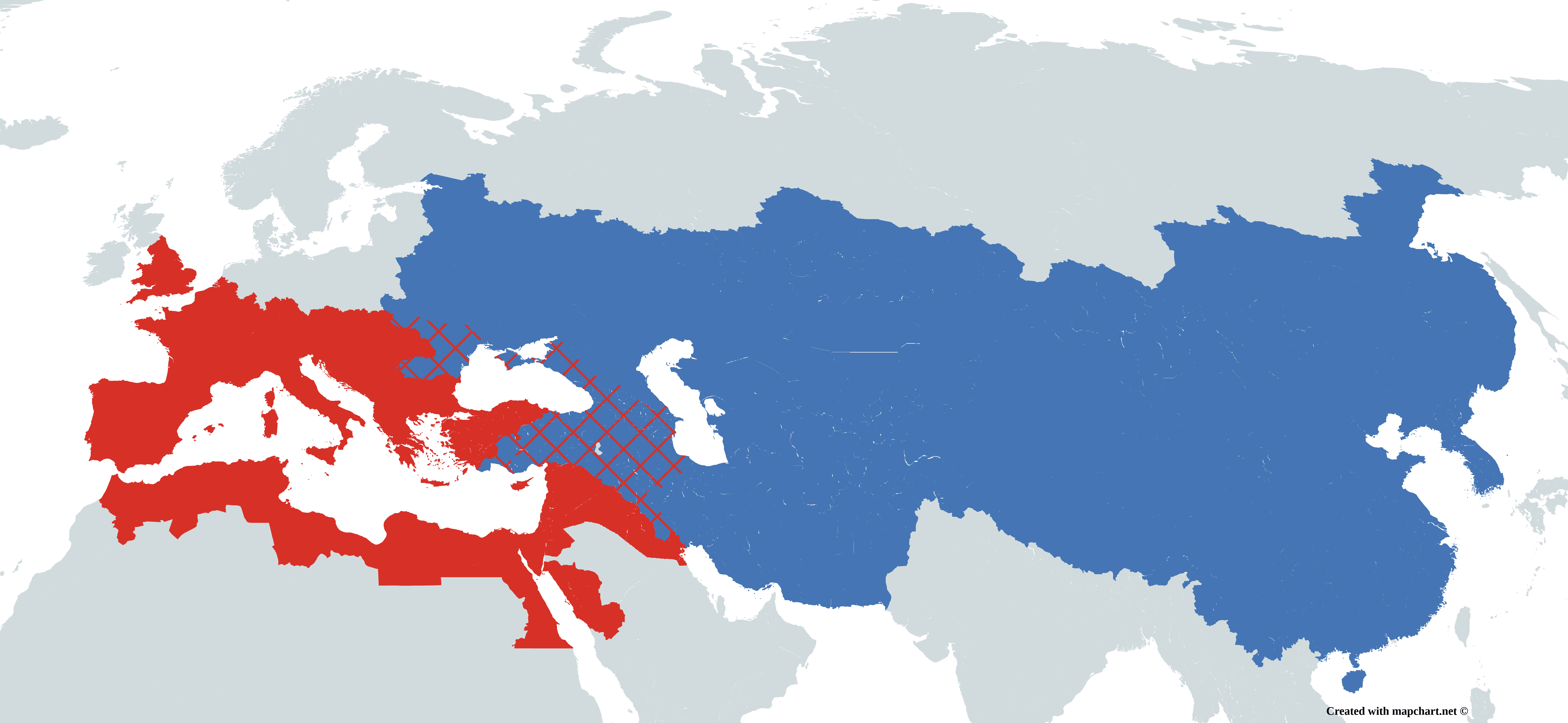The Roman Empire and the Mongol Empire were two powerful empires that dominated large parts of the world for centuries, but their differences in origins, governance, societal structure, and impact on the world were vast. The Roman Empire originated as a republic before becoming an empire, was highly centralized with an absolute ruler, and had a highly stratified society. On the other hand, the Mongol Empire was a highly decentralized empire that originated in Mongolia and allowed local leaders to govern their own territories while adopting a system of meritocracy. The Mongol Empire was also relatively egalitarian, while the Roman Empire had complex social classes and relied on slavery. Finally, both empires contributed significantly to world history, with the Roman Empire’s impact on Western civilization and the Mongol Empire facilitating the spread of ideas and technology from China to the rest of the world.
The Roman Empire vs. the Mongol Empire: A Clash of Civilizations
The Roman Empire and the Mongol Empire were two of the most powerful empires in world history. They both dominated large portions of the world for centuries and left a lasting impact on the cultures and societies they conquered. But despite their similarities, these two empires were vastly different in their origins, governance, societal structure, and impact on the world. In this article, we will compare and contrast these two great empires and examine their unique contributions to world history.
Origins
The Roman Empire originated in 27 BC when Julius Caesar’s adopted son, Octavian, became the first Roman Emperor after defeating Mark Antony and Cleopatra in a civil war. The Roman Empire was originally a republic, but it became an empire after years of civil wars and political instability. The Roman Empire was centered in the Mediterranean region and grew to include parts of Europe, the Middle East, and North Africa.
The Mongol Empire, on the other hand, was founded by Genghis Khan in the 13th century. The Mongol Empire originated in Mongolia and quickly spread across Asia, conquering China, Korea, Central Asia, and much of Eastern Europe. Unlike the Roman Empire, the Mongol Empire was a nomadic empire that was highly decentralized and did not have a fixed capital.
Governance
The Roman Empire was a highly centralized government that was ruled by an emperor. The emperor held absolute power and was supported by a strong bureaucracy and military. The Roman Empire was also divided into provinces, each governed by a governor appointed by the emperor. The Roman Empire was a monarchy, but it had some elements of democracy, such as the Senate, which had some influence on government policy.
The Mongol Empire, on the other hand, was highly decentralized and had a unique system of governance. The Mongols conquered vast territories and allowed local leaders to govern their own territories as long as they paid tribute to the Mongol Empire. The Mongols also had a system of meritocracy, where important positions were given to people based on their abilities rather than their social status. The Mongol Empire was also a strict military hierarchy, where soldiers were rewarded for their bravery in battle and punished for disobedience.
Societal Structure
The Roman Empire had a highly stratified society, with a small elite class that held most of the wealth and power. Slavery was also an integral part of Roman society, with slaves representing a significant portion of the population. The Roman Empire had a complex system of social classes, with individuals’ status determined by their birth, wealth, and occupation.
The Mongol Empire was a more egalitarian society, where individuals were valued based on their abilities rather than their social status. While the Mongol Empire had a hierarchical military structure, non-military Mongol society was relatively equal. The Mongol Empire also had a tradition of religious tolerance, allowing people of different faiths to worship freely.
Impact on the World
The Roman Empire had a lasting impact on Western civilization, with many of its cultural, legal, and architectural contributions still influencing modern society. The Roman Empire’s influence can be seen in the development of the Latin language, the spread of Christianity, and the creation of numerous architectural wonders such as the Colosseum and the Pantheon.
The Mongol Empire’s impact on the world was more limited in scope, but it had significant effects on the cultures and societies it conquered. The Mongol Empire facilitated the spread of ideas and technology, such as paper-making and gunpowder, from China to the rest of the world. The Mongol Empire also paved the way for the development of the Silk Road, which facilitated trade and cultural exchange between Europe and Asia.
Conclusion
In conclusion, the Roman Empire and the Mongol Empire were two of the most powerful empires in world history, but they were vastly different in their origins, governance, societal structure, and impact on the world. The Roman Empire was a highly centralized monarchy with a complex social hierarchy and a lasting impact on Western civilization. The Mongol Empire was a highly decentralized nomadic empire with a more egalitarian societal structure and a significant impact on the spread of ideas and technology between Europe and Asia. Despite their differences, both empires left an indelible mark on world history and continue to be studied and admired to this day.
